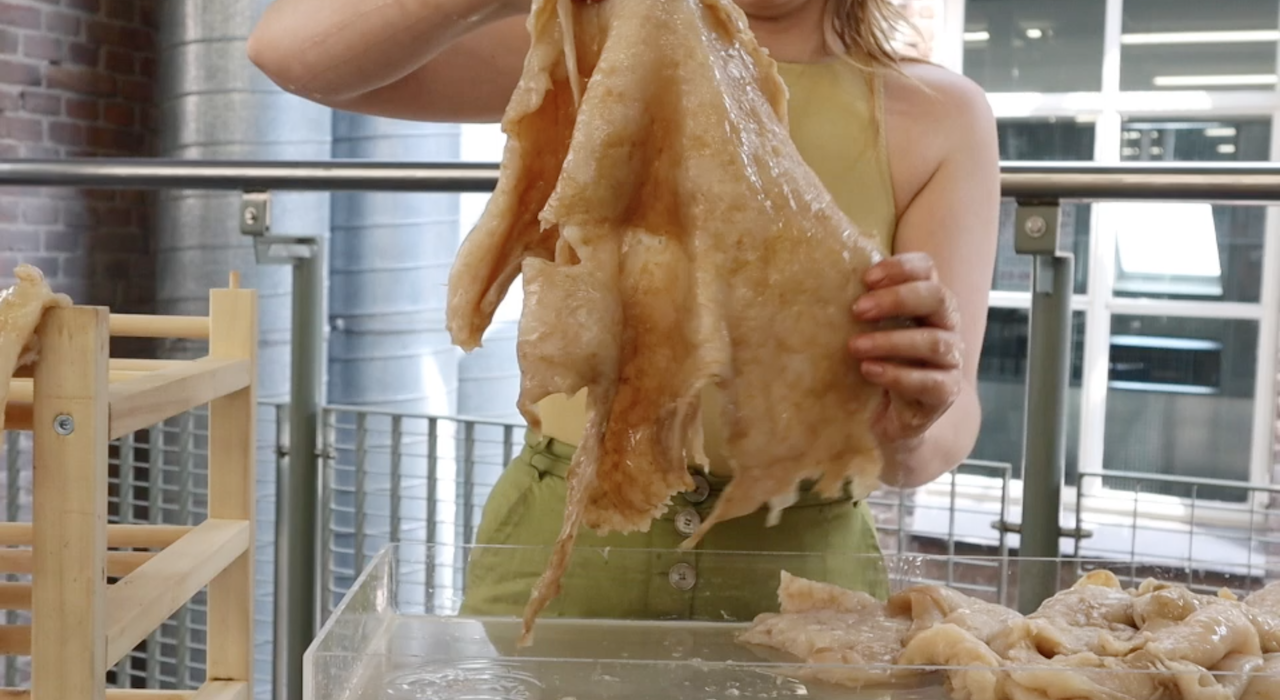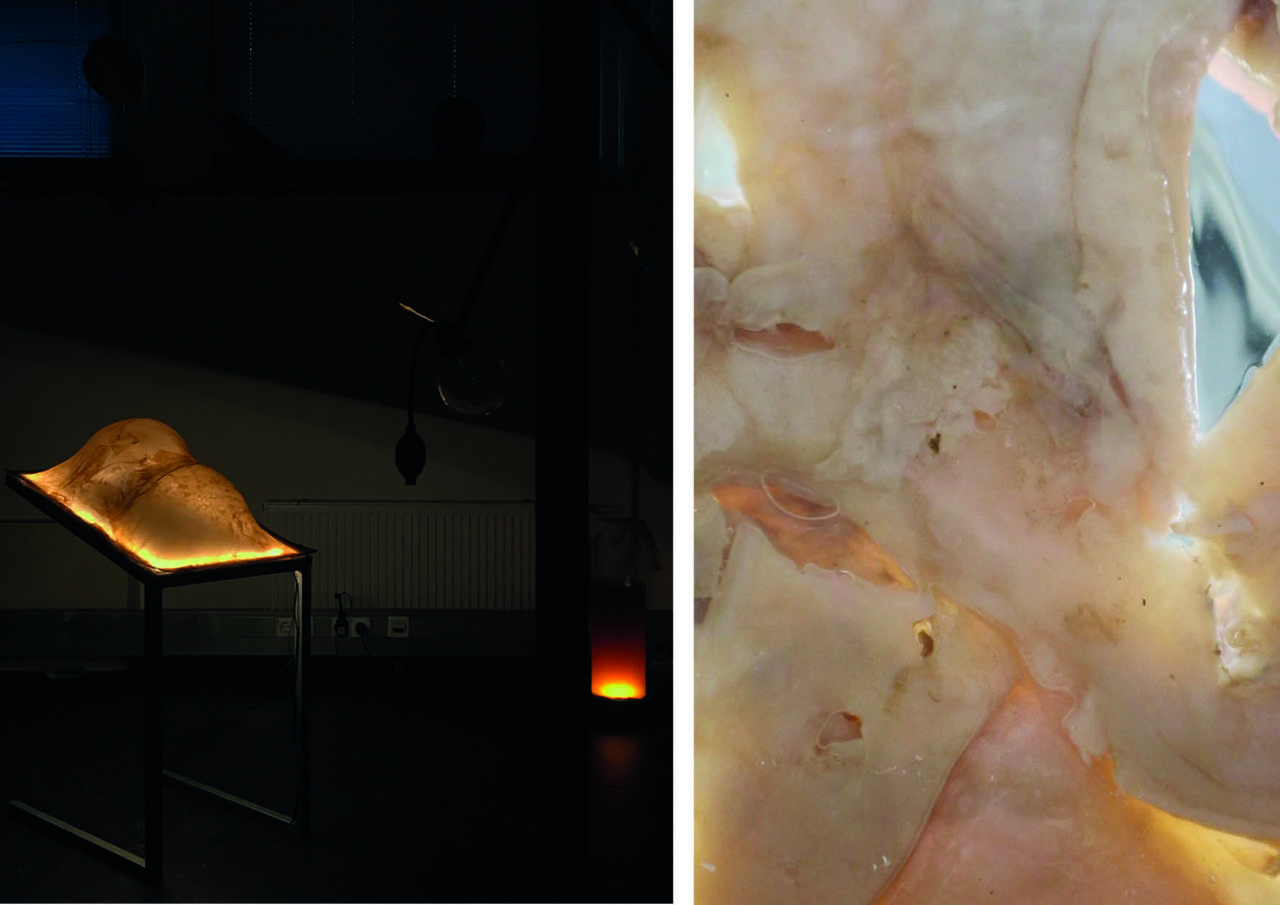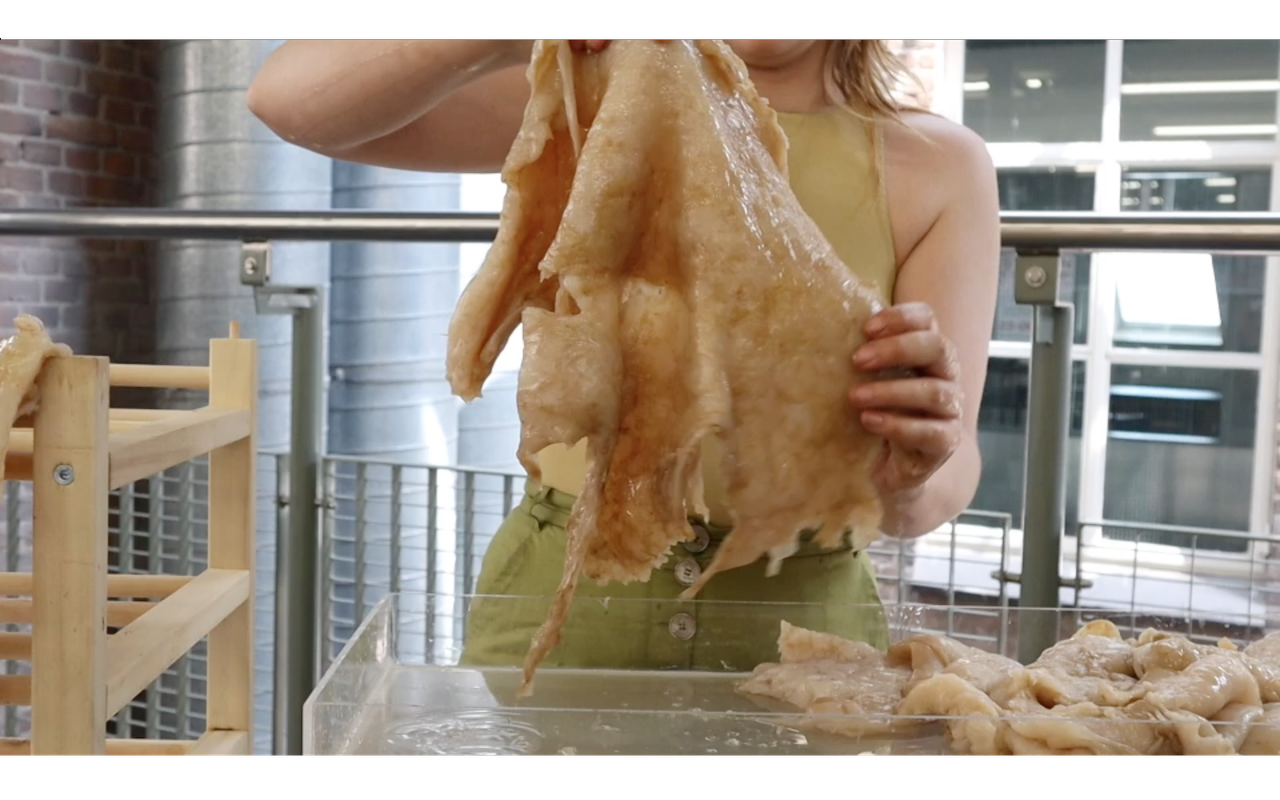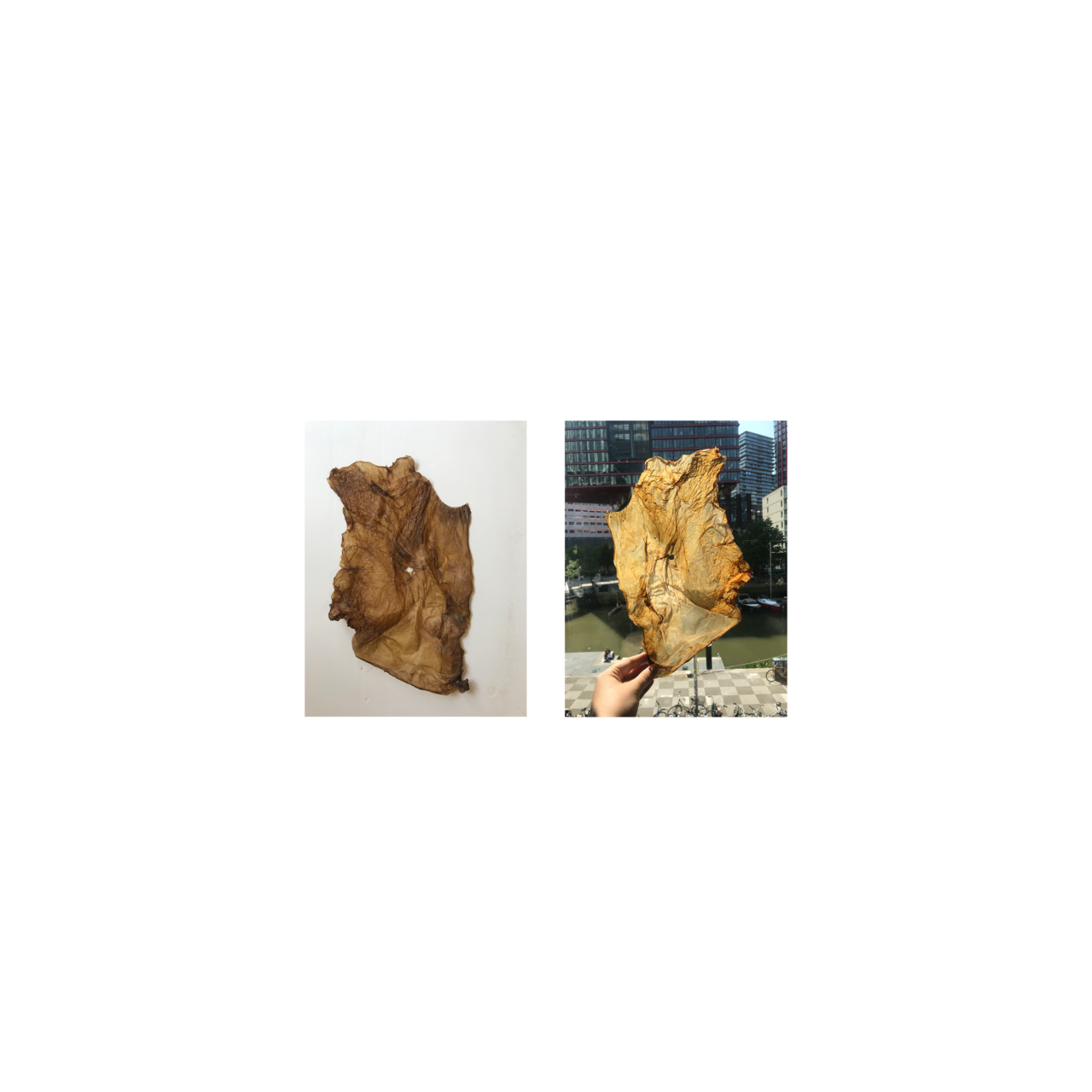Scobyosa


Project details
- Year
- 2023
- Programme
- Bachelor – Product Design
- Practices
- autonomous
- Minor
- Hacking
The project Scobyosa delves into the realm of bacterial cellulose and its wonderful qualities and potential. Derived from the natural fermentation process of yeasts and bacteria in sweetened tea, the bacteria convert sugars into an organic material: bacterial cellulose. Its appearance possesses an intriguing, otherworldly appearance that simultaneously captivates and challenges.
In the Kombucha industry, bacterial cellulose is a by-product, losing its value. The material holds properties that respond to different senses, allowing the material to be experienced in different ways and making its value transparent.
The installation demonstrates the collaborative abilities of the symbiotic culture of bacteria and yeast (SCOBY) and the transformative potential of bacterial cellulose. Serving as an invitation to challenge conventional perspectives on organic materials, highlighting the importance of reevaluating our relationship with materials and our understanding of waste in the context of sustainability and interconnectedness.
Click for video:

Main Installation components
Beverage | Kombucha is an ancient Chinese beverage and was initially prized for its healing properties. Serving the drink is an essential part for me because this is an intimate way of ‘getting to know’ the material by consuming its power supply.
Smell | SCOBY has an intense sour smell because the acetic acid bacteria convert the alcohol into acetic acid. While cleaning in public places at school, I often got negative comments about the sour smell. Someone joked that it would do something to my mind because I was in those acid fumes all day. I thought this was a funny comment because at that point I was cleaning the material in the bathroom, where there is always a bit of a sour smell, because… well I think we know why. Sandrine from the Living Station and I agreed that we don’t think the smell is so bad and that when you’re in it for over a minute, you get used to it. This made me realise that things suprise and disgust, because you are not familiar with it, or because it is out of place, out of context.

Bite | Of course I wondered if I could eat the material. Just one google search and I found out I wouldn’t be the first to try. Imagine, that during my observation of people’s reactions during the cleaning process, I was offering them a bite, would they take it? I bet not. Offering the material as a snack can evoke wonder and give new insights into how you relate to it, as you simultaneously see the material in other forms (such as a light structure or in its wet alien form).

Wet matter | After observing the different reactions people had on the material, I got curious as to why some people found the material to be alien and repellent. For this I have read Julia Kristeva’s book “Powers of Horror”. Kristeva suggests that the abject is that which is vast off from the body or the social order, such as bodily fluids, waste, or corpses. These objects challenge our sense of identity and order, and can provoke feelings of disgust, horror or fascination. People may be easily repulsed by the appearance of bacterial cellulose because it resembles the inside of our skin, which confronts us with decay, our own mortality.
Light | When the bacterial cellulose is dried, it colours darker and is translucent. This means that it appears differently when held up to light as opposed to a background. The transformation of the material when held up to the light is very interesting; it clearly shows the structure of the material.
